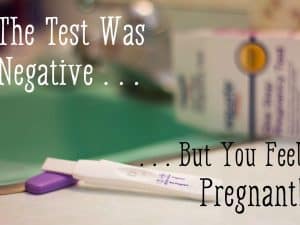Table of Contents
Do you often find yourself confused about or rather being troubled concerning, as to when water breaks? And, what would you do next? Will it be just as you’ve heard of the many stories where the pregnant woman’s water has broken in an inconvenient time and place? We’ve got you! This article will help you know everything related to the water breaks during pregnancy. But before that;
What causes the water to break?
While you are around the D-day, you would experience the water to break as a sign of labor. This “water breaking” perhaps is a rupture of the membranes of the sac called the amniotic sac, also signaling the baby is almost ready to be born.
As far as the occurrence is to be known, no one knows what triggers the chemical chain reaction around the 40th week of pregnancy but experts say there are a number of complicated factors that also include the brain signals from the fetus.
What will you feel like when the water will break?
One thing is for sure, the water wouldn’t come as a flood of liquid for sure. So, all those movies you saw? That’s not happening. Perhaps, when the water breaks, it is rather a slow trickle of a colorless, odorless amniotic fluid that will smell like something sweet.
How does one know if it is the water breaking or a fluid of discharge?
As far as the amniotic fluid is concerned, it is a pale straw or pale yellow colored fluid. However, on the other hand, the vaginal discharge is a thin, milky-white mucus that you otherwise would have experienced between your monthly periods too.
If the signs of labor were concerned, a blood flow is imminent that is a mucousy discharge, streaked pink or brown in color. This would seem like a glob of music if you notice.
How would you know if you're simply peeing or there is a rupture of membranes?
Especially during the third week of pregnancy, pregnant moms tend to leak urine that is quite normal. However, the best way to differentiate between the two is by its smell. If the fluid is yellowish or pale in color and smells of ammonia, it’s urine, on the other hand, if it doesn’t or smell sweet, it could be the rupture of membranes, the water breaking.
Does the water break before going into labor?
According to the healthcare provider, one mustn’t worry too much about the water breaking when in the checkout line. This is because only 15 percent of women experience water breaking before they go into labor.
Therefore, you will have many warnings to be well prepared, while there are other cases too where the women have an artificial rupture of the membranes. So, it is not always true for you to go through a water break as the process depends on person to person.
Absence of contractions when the water has broken?
Water breaking mostly indicated labor, while there are women who experience a rupture of membranes even before their labor begins.
In these cases, you may expect to feel the contractions within 12 hours unlike most who experience it within 24 hours. While said that, you mustn’t fear running out on the amniotic fluid as the body continues to produce it until the delivery.
However, the more time labor takes after the water has broken, the more the risk is added of the infections to enter through the premature rupture of membranes. To avoid this, most health care providers induce labor to pregnant women within 24 hours near the due date, it could also be induced as early as six hours after.
What to do when the water breaks?
Water breaking is a sign of labor, therefore, your health care provider would have probably given you a set of instructions to follow when there is a premature rupture of membranes.
However, if you fail to remember, it adds on to the risk to the baby too, when is why you must then call the doctor immediately.
If at all the water has broken or the amniotic sac is ruptured you may feel like you have an added risk which perhaps is true as the infections could enter. In this case, if the doctor has instructed you to wait for the contractions for over 12 hours, you’ll need to guard yourself as well as the baby as the protective barrier of the amniotic sac is breached.
You may choose to use panty liners or maxi pads (avoid tampons) in order to keep the amniotic fluid from wetting your clothes. Keep the vaginal area clean by making sure you carefully wipe from front to back.
Note – If you have tested positive for Group B Strep, you’ll need to get to the hospital as soon as the water breaks as it may increase the risk of infection.
When to call the healthcare provider?
Here are a few things you must keep in mind and call the health care provider if:
- The water broke and the fluid is green or brown in color. This indicates that the baby had a bowel movement in utero also known as the meconium.
- You are 37 weeks pregnant or less. However, you need to know that this is most unlikely to happen.
- As the water broke you can see a loop of the umbilical cord at the vaginal opening. In this case, you need to immediately call 911. This is when there is a premature rupture of membranes and the baby is not yet engaged in the pelvis or more likely that the baby is breech or preterm. This is what causes the umbilical cord to “prolapsed” or swept into the cervix or the vagina as the water breaks with the gush of the amniotic fluid.
Note – You may also want to contact the doctor if you have completed your trimester (are more than 36 weeks pregnant) and have no signs of labor or the water doesn’t break.
That’s all folks! This was all about what to do when the water breaks while you are pregnant. However, while you’re around the labor clock the doctor may have asked you to keep the delivery bag ready.
As we at Parenthood Bliss understand this overwhelming experience, we are happy to share our baby registry with you. All you need to do is click on that link and look at the article with everything you need in a baby registry in a form of a checklist of exactly what you need to put in the baby registry.
To Conclude:
Water breaks during pregnancy perhaps a small gush of water that relieves fluid as a sign of the baby being ready before the baby is born.
The content above helps with the health information and the content measurement audience insights along with the risk factors concerning labor and delivery as the water breaks with the help of the media websites.
All of this would help you decode the uterine contractions when and as the labor begins and you are ready to give birth to a child as well as everything that happens next to the pregnant woman as the water breaks.
Feel free to get in touch with us at Parenthood Bliss with any questions that you might have, we’re always happy to help!
FAQs: Water Breaks During Pregnancy: What To Do Next?
1) How long can a pregnant woman stay pregnant after her water breaks?
2) What are the signs of water breaking?
3) What is the amount of water that comes out as the water breaks?
Sources:
Reviewed By:

Esha Chainani - Obstetrician and Gynaecologist
Dr. Esha Chainani is an Obstetrician, Gynaecologist, and laparoscopic surgeon who aims to break the stigma around women’s health by advocating an inclusive and open practice of obstetrics and gynecology and an author of several internationally published research papers and health articles in the media like the Swaddle.
She also founded Premaa, a non-profit to reduce maternal morbidity and eventual maternal mortality by providing lower-income pregnant women living in urban areas with cell phone access through an app that can feature an entire section about contraception as well for a whole gamut of reproductive health.
A panel for multiple health sessions including with the UN, USAID, BMC, gender at work, and multiple non-profit organisations, and is on the advisory panel of the South Indian medical students association.





